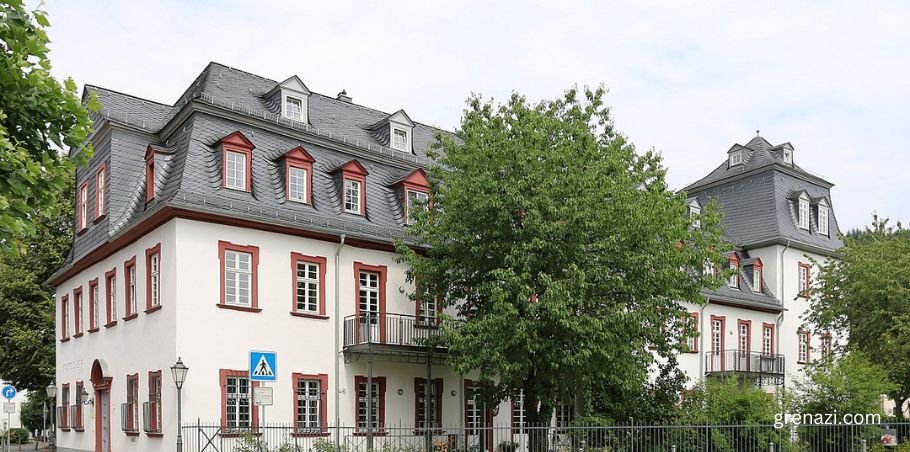Dominium Parchau Kreis Carthaus is a historical region that has captivated historians and travelers alike. Situated in a significant part of Central Europe, its history spans centuries, with stories of nobility, land ownership, and cultural evolution that continue to echo in modern times. From its geographic importance to its role in European conflicts, dominium parchau kreis carthaus remains a fascinating chapter in the continent’s past.
Historical Background
The term ” dominium parchau kreis carthaus” traditionally refers to a lordship or a feudal estate. dominium parchau kreis carthaus began as an important landholding during the medieval period, under the ownership of powerful nobles. The land was not just a place of residence but a vital source of agriculture, trade, and wealth for its rulers.
Kreis Carthaus, a district within which Dominium Parchau is located, has long been recognized for its strategic location. It served as a focal point for trade routes and military campaigns due to its proximity to key European territories. Its role as a defensive stronghold further solidified its importance.
Geography and Location
Located at the crossroads of major European empires, dominium parchau kreis carthaus was more than a landholding—it was a strategic center that controlled access to various regions. Its placement made it vital for military endeavors, as well as a bustling point for commerce and diplomacy.
The natural landscape surrounding dominium parchau kreis carthaus, including fertile plains and natural defenses like rivers and hills, contributed greatly to its agricultural and defensive capabilities. These physical features played a key role in shaping the settlement patterns and military strategies of the time.
Social and Economic Structure
The feudal system played a central role in dominium parchau kreis carthaus, where the local nobility governed vast estates and collected taxes from the peasantry. These landlords not only managed agricultural production but also controlled the economic and social life of the region.
Agriculture was the backbone of the economy in dominium parchau kreis carthaus. The fertile lands produced a variety of crops that supported both the local population and external trade. Land management was an essential aspect of life here, with innovations in farming techniques improving yields over time.
Cultural Significance
dominium parchau kreis carthaus was not just a center of economic and military might but also a hub of cultural expression. The influence of various artistic movements can be seen in its architecture, from grand manor houses to imposing fortresses, which reflect the tastes of its rulers across the centuries.
Festivals and traditional celebrations have always been part of life in Kreis Carthaus. Many of these customs are tied to the agrarian calendar and local religious practices, creating a rich tapestry of cultural heritage that continues to be celebrated today.
Military Influence and Defense
As a key region during many European conflicts, dominium parchau kreis carthaus was heavily fortified. Castles, walls, and watchtowers were erected to protect against invasions. The region’s military architecture is a testament to its importance in historical conflicts.
Over the centuries, dominium parchau kreis carthaus was involved in numerous military campaigns, defending its borders from foreign invaders. Its strategic importance made it a prime target during wars, especially during medieval and early modern European conflicts.
Governance and Administration
dominium parchau kreis carthaus operated under the feudal system, with large estates owned by nobility who maintained control over the peasants working the land. This system of governance persisted for centuries, gradually transitioning into more modern forms of land ownership and administration.
Alongside the nobility, local administrators played a crucial role in the day-to-day governance of the region. They managed everything from tax collection to local disputes, ensuring the smooth functioning of the land.
Transition From Feudalism to Modernity
Like much of Europe, dominium parchau kreis carthaus experienced a gradual shift from the feudal system to more modern forms of governance and land ownership. This transition was marked by the decline of the nobility’s power and the rise of capitalist economies.
Over the centuries, many notable figures have left their mark on Dominium Parchau. From influential nobles to military leaders, these individuals helped shape the region’s history and legacy.
Economic Growth and Decline
The advent of industrialization brought both prosperity and challenges to Dominium Parchau. While new industries provided jobs and growth, they also disrupted traditional agricultural practices and led to the decline of feudal estates.
Today, dominium parchau kreis carthaus’s economy is a mix of agriculture, tourism, and small-scale industries. The region has embraced modernization while still holding onto its historical roots.
Architectural Landmarks
Many historic buildings in Dominium Parchau have been preserved, showcasing the architectural styles that evolved over centuries. From medieval castles to Baroque palaces, these landmarks attract tourists and historians alike.
Kreis Carthaus is known for its unique blend of architectural styles, influenced by the many cultures that have passed through the region. The buildings reflect a mix of Gothic, Renaissance, and Baroque elements.
Key Events in History
The formation of Dominium Parchau as a significant estate dates back to medieval times. Over the centuries, it grew in importance due to its strategic location and economic potential.
Many historical events, including wars, treaties, and dynastic changes, have influenced the development of Dominium Parchau and Kreis Carthaus. Each event left a lasting impact on the region’s political and cultural landscape.
Influence of Religion
Religion played a major role in the daily life of Dominium Parchau’s inhabitants. Churches and monasteries were not only spiritual centers but also influential in local governance and education.
Religious festivals and pilgrimages have long been a tradition in Kreis Carthaus. These events bring communities together and continue to be an integral part of the region’s cultural identity.
Modern-Day Kreis Carthaus
Today, the legacy of Dominium Parchau lives on in the form of preserved historical sites, ongoing cultural traditions, and the region’s role in tourism. The rich history of the region is still evident in its architecture, customs, and way of life.
Kreis Carthaus remains a significant part of European history, with its past influencing modern governance, culture, and regional identity. The preservation of its historical landmarks continues to attract tourists and historians.
Tourism and Heritage
Today, Dominium Parchau and Kreis Carthaus attract visitors from around the world. Popular attractions include the historic castles, churches, and museums that tell the story of the region’s rich history.
Efforts are being made to preserve the architectural and cultural heritage of Dominium Parchau. Restoration projects and tourism initiatives ensure that future generations can continue to learn from and enjoy the region’s history.
FAQs about Dominium Parchau Kreis Carthaus
- What is Dominium Parchau?
Dominium Parchau is a historical estate that played a significant role in Central European history due to its strategic location and economic importance. - Where is Kreis Carthaus located?
Kreis Carthaus is a district located in Central Europe, known for its historical significance and architectural landmarks. - What was the economic base of Dominium Parchau?
The economy of Dominium Parchau was primarily based on agriculture, with feudal landlords overseeing vast estates. - What are the key historical events in the region?
The region has witnessed various military conflicts, dynastic changes, and treaties, all of which have shaped its history. - How is Dominium Parchau preserved today?
Today, Dominium Parchau is preserved through tourism, historical restoration projects, and the continued celebration of its cultural heritage.
Conclusion
Dominium Parchau Kreis Carthaus offers a fascinating glimpse into the past, with its rich history of nobility, military importance, and cultural traditions. As a region that has seen the rise and fall of empires, it stands today as a testament to the resilience of history and heritage.









